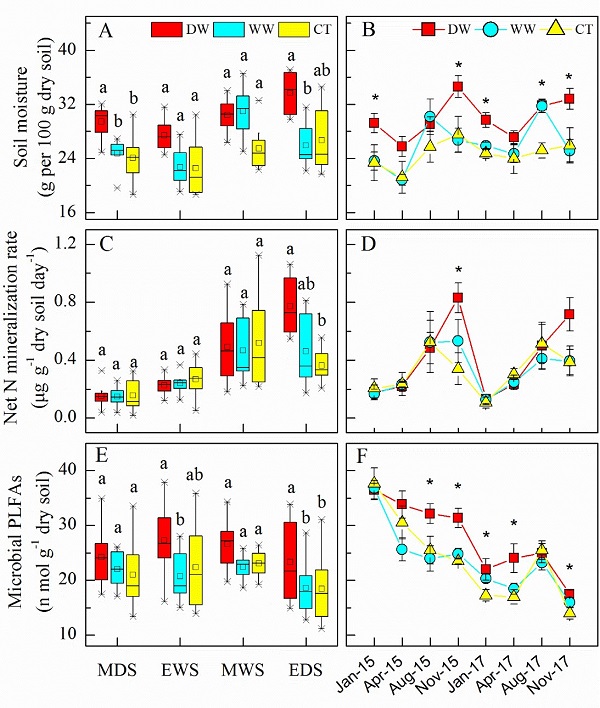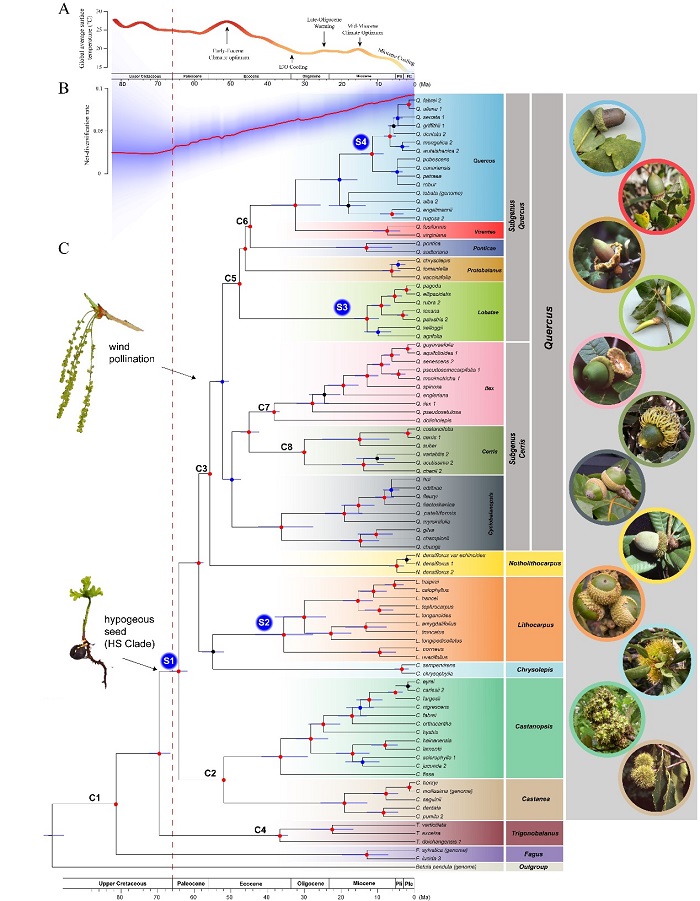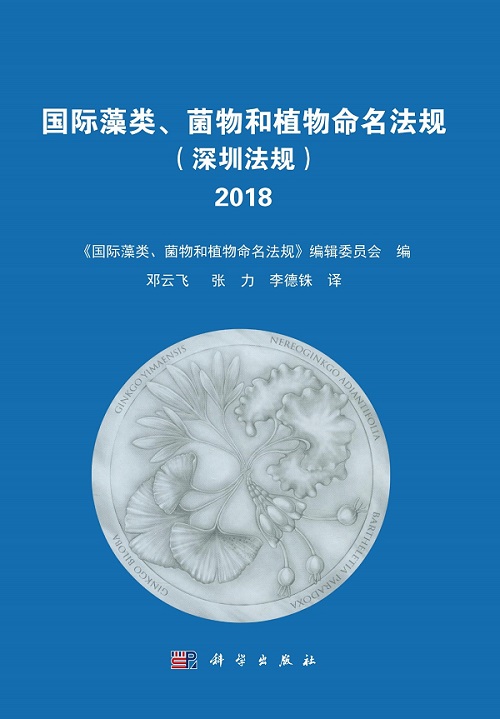News
-
2022-03-29South China Botanical Garden made progress in study of soil nitrogen mineralization response to altering seasonal precipitation distribution patternSeasonal precipitation regime plays a vital role in regulating nutrient dynamics in seasonally dry tropical forests .We found that a wetter wet season did not significantly affect soil microbes or net N mineralization rates , even in the mid-wet season ( August ) when soil water content in the WW treatment increased significantly .By contrast , ... Seasonal precipitation regime plays a vital role in regulating nutrient dynamics in seasonally dry tropical forests. Present evidence suggests that not only wet season precipitation is increasing in the tropics of South China, but also that the wet season is occurring later. However, it is unclear how nutrient dynamics will respond to the projec...Read More
-
2022-03-24South China Botanical Garden found that hydrogen-water planting can increase the content of active components in Wuzhimaotao (Ficus hirta Vahl)Wuzhimaotao ( Ficus hirta Vahl ) is a common homologous plant of food and medicine in Lingnan area of China . It is commonly used in the folk to treat diseases such as spleen deficiency , tuberculosis , weakness , rheumatism , night sweats .Because the main pharmacodynamic component of Chinese herbal medicine is usually plant secondary metabolit... Wuzhimaotao (Ficus hirta Vahl) is a common homologous plant of food and medicine in Lingnan area of China. It is commonly used in the folk to treat diseases such as spleen deficiency, tuberculosis, weakness, rheumatism, night sweats, postpartum agalactism and so on. In Guangdong, Wuzhimaotao is called "Nanqi" or "Guangdong ginseng", which is oft...Read More
-
2022-03-21New progress on phylogenomic study of FagaceaYet to be sufficiently described across Fagaceae .Figure 1 Phylogenetic relationships and divergence time estimation of Fagaceae .Read More
Northern Hemisphere forests changed drastically since the early Eocene due to global climate change. Central to the floristic replacement with significant ecological consequence are the roughly 900 species currently recognized within Fagaceae (oak, beech, chestnut, stone oak). Fossils of modern Fagaceae are well represented in the Northern ... -
2022-02-25The development of a new technology to discriminate geographical origins of wolfberry (Lycium barbarum L.)To develop sophisticated approaches for distinguishing goji origins , 325 wolfberry fruit samples of a certain cultivar , plant age , drying method and collection season were gathered from 26 producing areas across Northwest China in 2017 and.The indices selected in this study can distinguish gojis produced in Zhongning County from fruit origina...Read More
To develop sophisticated approaches for distinguishing goji origins, 325 wolfberry fruit samples of a certain cultivar, plant age, drying method and collection season were gathered from 26 producing areas across Northwest China in 2017 and 2018. We employed 49 indices, including stable isotopes, earth elements, soluble amino acids, and sacc... -
2022-01-22Joint approaches to reduce cadmium exposure risk from rice consumptionHeavy metals in situ .Rice is a crop that can easily accumulate cadmium ( Cd ) . With the rapid development of economy, heavy metal pollution of farmland soil and crops caused by various natural and human factors is becoming more and more serious. In situ passivation remediation technology is a highly respected treatment method at present. It can reduce the absorption of heavy metals by crops by applying soil passivator to s...Read More
-
2021-12-20New research progress on conservation of rare tree fern Sphaeropteris lepiferaSphaeropteris lepifera , a tree fern belonging to the family Cyatheaceae , is valued medicinally and horticulturally .Tried to reintroduce artificially bred fiddleheads near the native environment such as Nan ' ao County of Shantou City in Guangdong Province . Based on the suitability distribution results of maximum entropy ( MaxEnt ) model and ... Sphaeropteris lepifera, a tree fern belonging to the family Cyatheaceae, is valued medicinally and horticulturally. Despite its present conservation status, this fern represents an ancient lineage that originated ca. 300 million years ago, became relatively widespread, and, later, underwent extinctions leading to its present restricted distribut...Read More
-
2021-12-17Effects of nitrogen addition and increased precipitation on xylem growth of Quercus acutissima Caruth. in central ChinaWeekly intervals during 2014 –.Interactive effect of nitrogen addition ( N0 and N1 ) , precipitation increase ( P0 and P1 ) , and season ( S1 , S2 , and S3 ) on relative xylem growth in 2015 made using the “ pairs ”.Function in R package “ lsmeans ” . Atmospheric nitrogen (N) deposition and increasing precipitation affect carbon sequestration in terrestrial ecosystems, but how these two concurrent global change variables affect xylem growth in trees (i.e. independently or interactively) remains unclear. South China Botanical Garden conducted novel experiments in central China to monitor the x...Read More
-
2021-12-03The Chinese version of International Code of Nomenclature for Algae, Fungi, and Plants (Shenzhen Code) publishedThe Chinese version of International Code of Nomenclature for Algae , Fungi , and Plants ( Shenzhen Code ) has been published in November 2021 by Science Press .Beijing . Prof . Deng Yun-Fei from South China Botanical Garden of Chinese Academy of Sciences ( CAS ) , Prof . Zhang Li from Fairy Lake Botanical Garden , Shenzhen , and Prof . Li De-Zh... The Chinese version of International Code of Nomenclature for Algae, Fungi, and Plants (Shenzhen Code) has been published in November 2021 by Science Press, Beijing. Prof. Deng Yun-Fei from South China Botanical Garden of Chinese Academy of Sciences (CAS), Prof. Zhang Li from Fairy Lake Botanical Garden, Shenzhen, and Prof. Li De-Zhu from Kunmin...Read More






